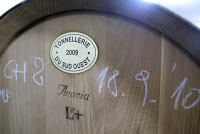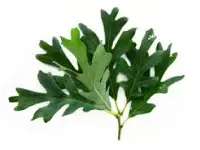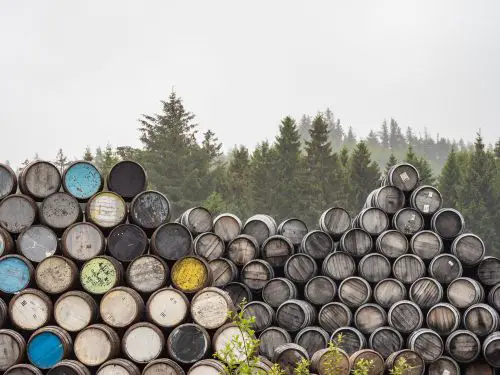A query earlier this month got me  thinking. It was about an unidentifiable bottle dating from the 1870s being overwhelmed by fresh pine and resin flavours.
thinking. It was about an unidentifiable bottle dating from the 1870s being overwhelmed by fresh pine and resin flavours.
The query was raised by the team (@teamdb on Twitter) at Drinks Business (Europe’s leading drinks trade publication) who had asked if it was plausible that some Bordeaux producers used pine barrels in 19th century?
They had wondered whether the lack of funds in the 1800s and the quantity of Pine in the area would have made it rather a tempting option to make barrels out of this wood.
The wine aged in barrels takes on some of the compounds in  the barrel. These compounds depend on where the tree was grown, how the wood was seasoned, the degree of “toast” (charring) applied during manufacture – and the age of the barrel.
the barrel. These compounds depend on where the tree was grown, how the wood was seasoned, the degree of “toast” (charring) applied during manufacture – and the age of the barrel.
Most barrels are made of Oak but archaeological studies have found that the Romans shipped wine barrels to England that were made from Larch and Fir (which probably came from Germany and France).
Interestingly Larch barrels are still used in Switzerland to age Le Glacier (an oxidised, sherry type wine specific to the Val d´Anniviers).
Herodotus (the 5th century Greek historian) mentions Palm wood casks used in shipping Armenian wine to Babylon in Mesopotamia. Pliny the Elder, who died in 79 AD, wrote that storing wine in barrels made of Yew made it poisonous, so there was obviously an awareness of the properties of different woods in ancient times.
 In centuries past barrels have been made from Chestnut, Pine, Redwood, and Acacia. Historically, Chestnut was used by Beaujolais, Italian and Portuguese wine makers but Chestnut is very high in tannins and is quite porous.
In centuries past barrels have been made from Chestnut, Pine, Redwood, and Acacia. Historically, Chestnut was used by Beaujolais, Italian and Portuguese wine makers but Chestnut is very high in tannins and is quite porous.
Redwood is very rigid and is therefore difficult to bend into the smaller barrel shapes and can impart an unpleasant flavour.
Austrian winemakers have a history of using Acacia barrels and Acacia (Robinia Pseudoacacia) imparts a yellow tint to the wine. Acacia barrels are also used in Croatia and Bulgaria but centurie s ago they were used in France, Spain, Austria and Italy.
s ago they were used in France, Spain, Austria and Italy.
Acacia barrels are mentioned in La Monographie du Coteau de l’Ermitage et des Vignobles qui l’avoisinent, which was published in Dijon, in 1861: “You never age Ermitage into old containers . . . White wines seem to benefit more from White Mulberry and Acacia than from Oak.”
Recently American wineries have begun to age fine white wines in Acacia barrels. In Chile there are traditions for using barrel made of Rauli wood but it is beginning to fall out of favour due to the musky scent it imparts on wine. Japanese sake makers have sometimes used Japanese Cedar, which imparts an unusual, mint / pine flavour.
 Oak is the preferred wood of the cooper for wine barrel making for its qualities of porosity, strength, resilience, workability, weight and character. Common flavours in red wine aged in Oak are caramel, cream, smoke, spice and vanilla.
Oak is the preferred wood of the cooper for wine barrel making for its qualities of porosity, strength, resilience, workability, weight and character. Common flavours in red wine aged in Oak are caramel, cream, smoke, spice and vanilla.
Dependant on the tasting of the barrel (charring during the manufacturing process) red wines can develop flavours of mocha and toffee. White wines aged in oak are said to have flavours of coconut, cinnamon and clove.
of coconut, cinnamon and clove.
To say that there are quite a few species of oak would be an understatement . . . if you count all the subspecies there are around 600. France tends to use the English Oak (Quercus Robor/Penunculata) and the Sessile Oak (Quercus Petraea) for barrel making.
The Sessile Oak has a fine grain and the general rule of thumb is that the finer grained oaks give more aromas and less tannins. Most French Oak comes from one or more of the Allier, Limousin, Nevers, Trancais and Vosges forests.
T he species of Oak typically used in American barrels is the White Oak (Quercus Alba) which is found in most of the Eastern United States as well as Missouri, Minnesota and Wisconsin where many wine barrels are from.
he species of Oak typically used in American barrels is the White Oak (Quercus Alba) which is found in most of the Eastern United States as well as Missouri, Minnesota and Wisconsin where many wine barrels are from.
In Oregon the Garry Oak or White Oregon Oak (Quercus Garryana) has started to gain usage due to its closer similarities to English Oak.
I can’t think of a wine fault that causes the flavours of pine or resin that did not come from its storage ie from the barrel. So I presume that the Pine in the wine that the team at Drinks Business discovered must either have come from a barrel made from this wood or – possibly from a barrel that had once held resin.
The Landes forest near Bordeaux was famous for its resin industry and one Resinier would work about 7000 Pines a year. Once collected the resin was tipped into barrels to be taken to the local resin distillery for processing. Could it be that these barrels were reused and sold on to wine makers by unscrupulous merchants?
There could be a way to find out – back in 2009 I wrote about the discover y that wine still holds the chemical signature of the forest from which the barrel used to age it was made (See my Blog Wine Holds A Chemical Memory of Its Barrelling).
y that wine still holds the chemical signature of the forest from which the barrel used to age it was made (See my Blog Wine Holds A Chemical Memory of Its Barrelling).
A European team of researchers used a high-field ion cyclotron resonance-Fourier transform mass spectrometer to collect their data, one of only 10 of its size worldwide.
To demonstrate the potential of the approach, the team concentrated their research on wine known to have been aged in oak barrels from 9 different forests across France.
They showed that they could match the chemical fingerprints of the oak with the chemical composition of the wine, and therefore identify in which of the 9 forests the oak for the barrels used to age the wine was grown!


